
December 2021 - Extra
The Air-Blast Engine Project Trilogy
Part 3: Fall Finale
By Paul Harvey
Finally, after so many different names for our project,
we chose Diesel Centrale CPM. Now, we have a catchy and unique name
and logo. So why this name? It is in honor of the great
plant of air-blast engines still existing in Austria.
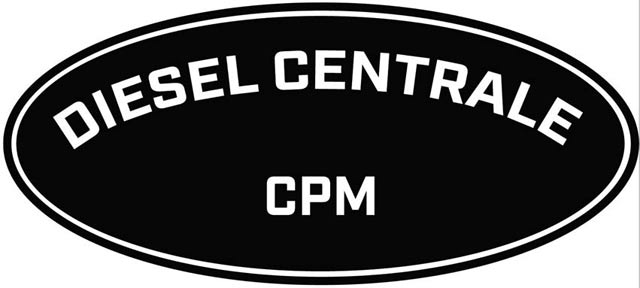
Diesel Centrale - Austria houses an array of Graz
engines that provided electricity for the surrounding industry. It
operated from the early 1900s until the 1950s. It remains intact.
Note the peaceful setting and the magnificent
architecture. It is our intention to capture those qualities here
in Coolspring.
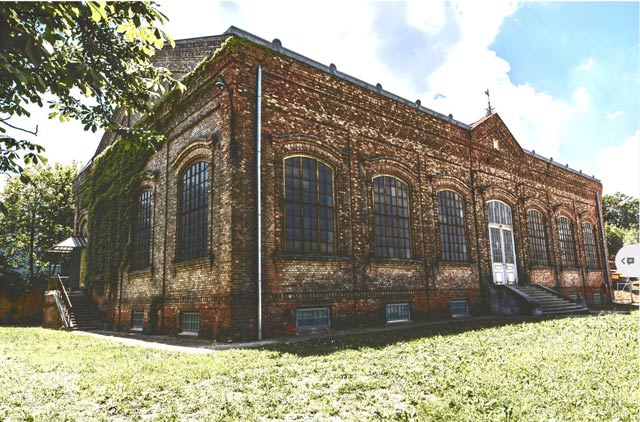
Wow! What a beautiful Autumn. And so warm
and sunny. I was greeted by these glorious leaves each morning.
Great day for writing.
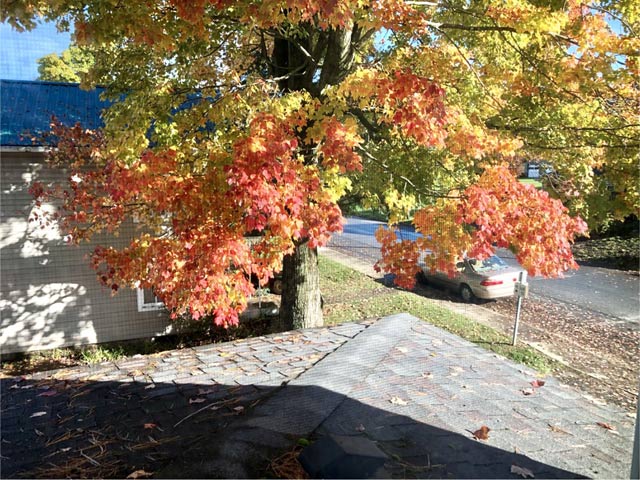
So, let’s take a peek at what is being done. Great weather means great progress! The building site was safely fenced for our Fall Show, and many visitors viewed and enjoyed it.
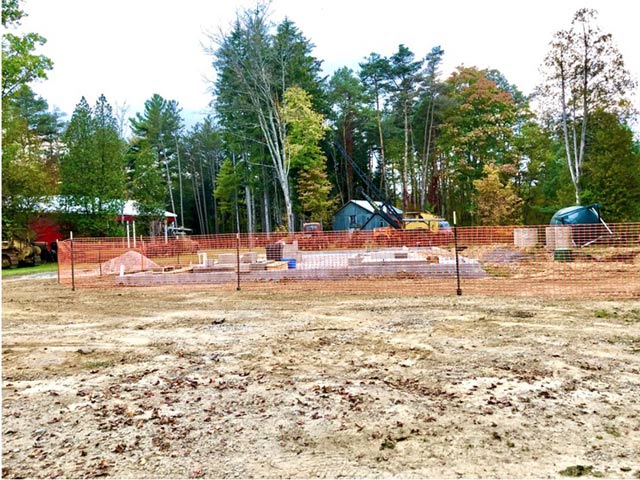
Tom, a master plumber, began the extensive array of
piping needed to supply each engine. Water lines, air lines,
electrical conduit, and the list goes on.
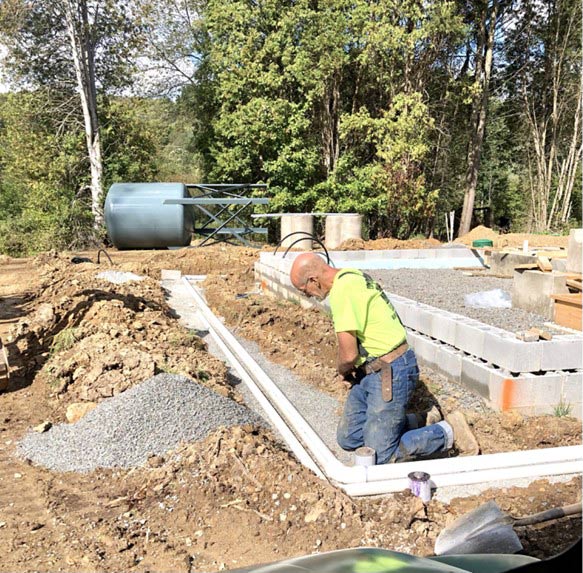
Another view of the pipe work. Since the water
discharged from the engines needed gravity return, a gravel bed had to
be carefully placed with a drop of
¼ inch per foot. Note the conduits
through the foundation for the pipes. It was all done well.
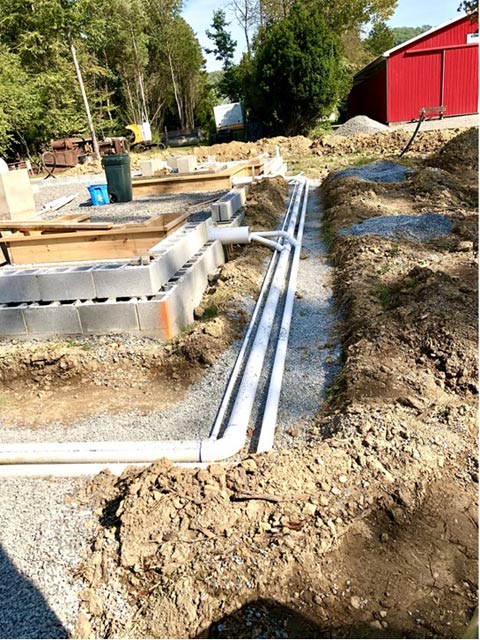
We have confirmed the roof tile and wall brick designs
and placed deposits to lock in the prices and ensure delivery in March
2022. Exciting! The tile is a composite material that is
surprisingly lightweight yet very durable. It is made by Brava
Tile. Our choice is called Terra Cotta and closely resembles that
used in Germany. The bricks are Canton design made by Glen-Gery.
Many styles were examined, and these are a nearly perfect match to
photos kindly supplied by Dr. Friedrich Busch.
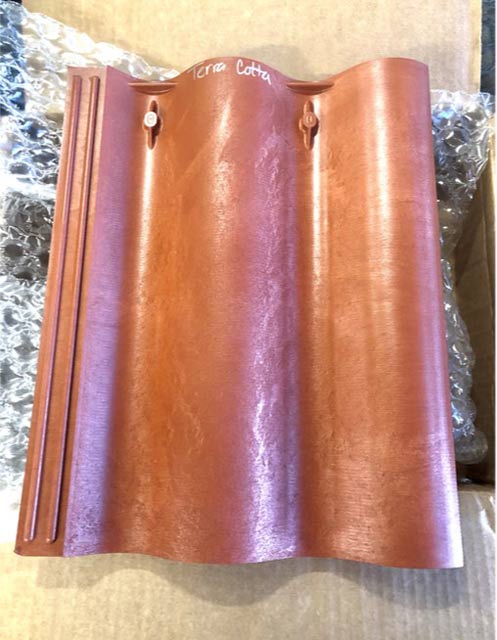
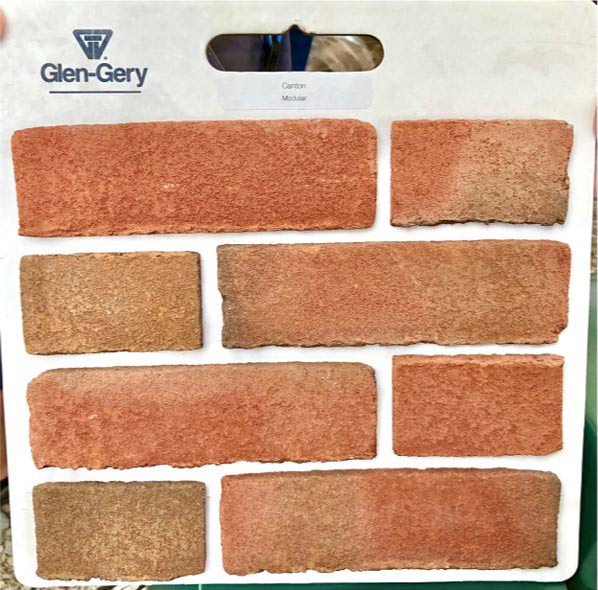
A 1,000-gallon elevated tank, restored by Stanton
Dynamics, will provide cooling water for the engines. The water
will then drain into the 1,250-gallon sump tank, made by Punxsy Burial
Service, to be pumped into the elevated tank to repeat the cycle.
All pipes to the sump will be through the green riser.
Great, but where does the water come from? So…
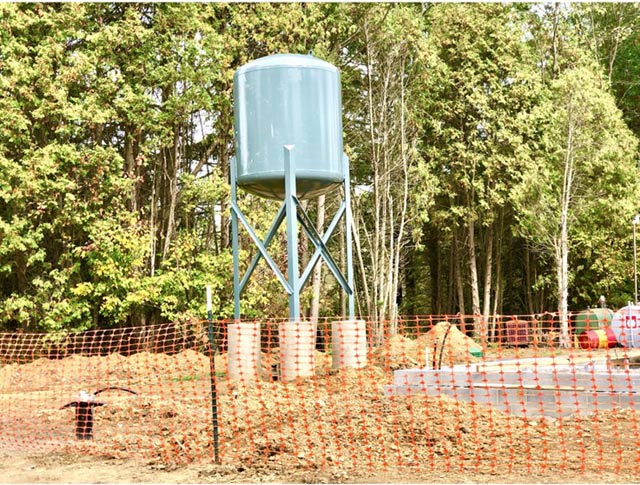
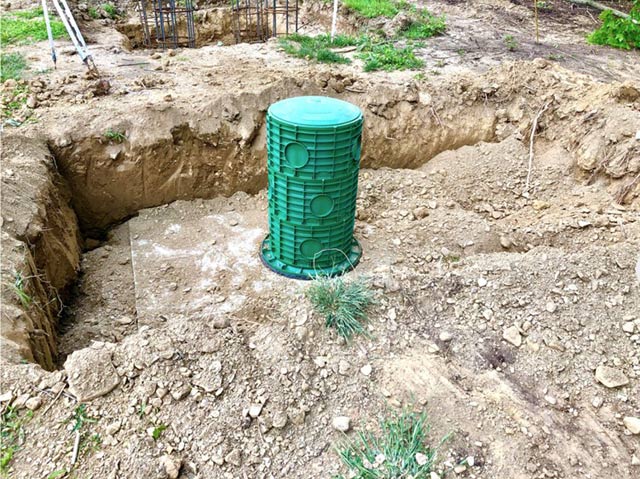
We need a water well! I contacted Forsyth Drilling
in DuBois and a suitable day was chosen. Wow! What a rig.
He had to pound in 42 feet of steel casing to get through the gravel and
into the water-bearing sandstone. Finishing at 100 feet, he found
an almost unlimited supply of good water. The submersible pump has
now been installed and all is “well!” Besides filling the tanks, it is
imperative that cold water be supplied to the engine intercoolers for
proper operation. As time goes on, there will be many other uses
for this great water on “The Hill.”
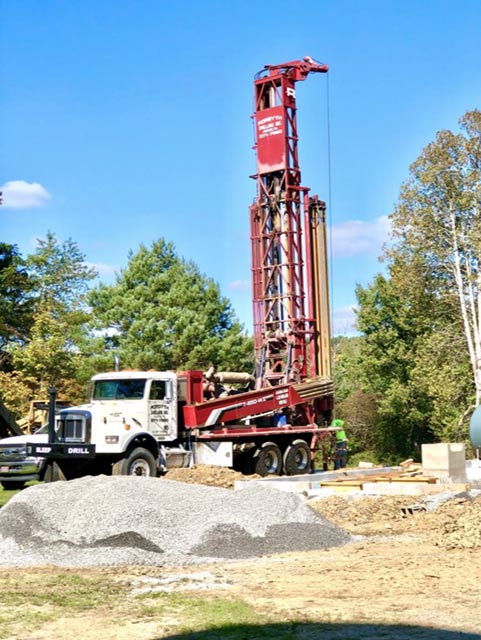
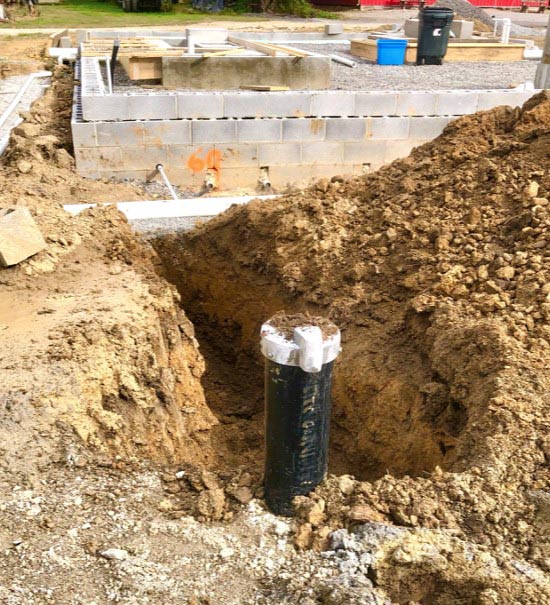
So, what’s happening with the engines? Some
progress and some delays. Let’s take a look. Friedrich sent me
this photo of the Graz happily running in his shop in Hof, Germany.
The COVID-19 problem postponed our making a trip to learn its operation,
dismantle it, and to move it to CPM. We hope 2022 will be better.

The Benz has been extensively restored by Gordon Jones
and will have a test run soon. It will winter in his shop.
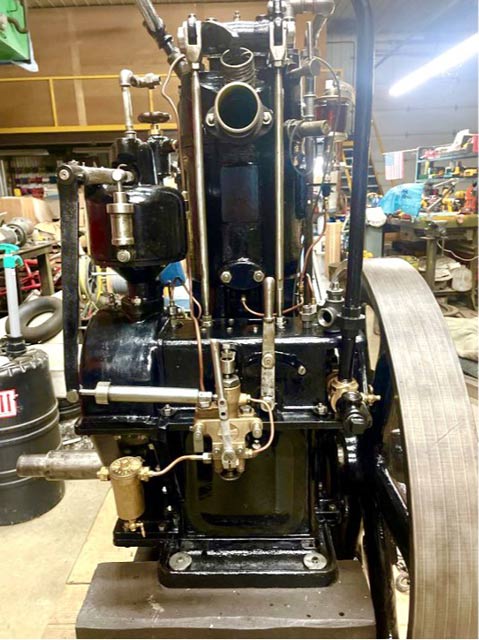
Chris Austin and I have studied the complicated piping
on our Augsburg. It is of the early design where the first stage
of the injection air is bled from the power cylinder. The middle
rocker arm has a shiftable roller that can operate the starting air,
then bleed off injection air. This design was soon replaced, so
this will be the only operating engine in the world using it.
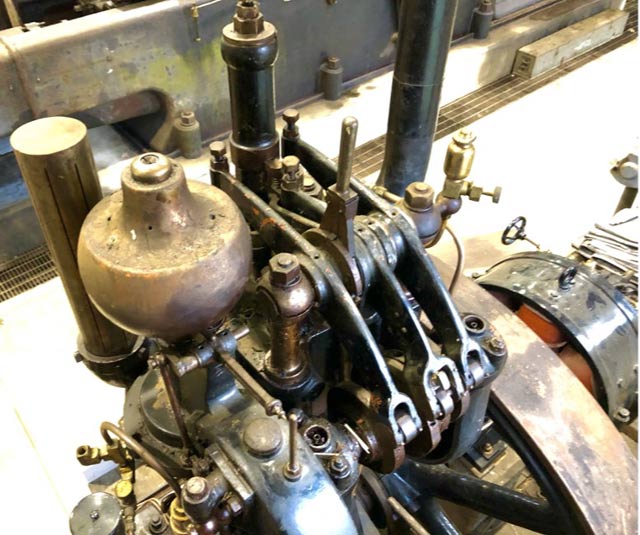
This drawing is the final floor plan of Diesel Centrale
CPM and represents a lot of thought, measuring, and rearranging. Whew,
glad that’s done! One can see the locations of the three engines,
as well as the utility room. Doors are designed for handicap access as
is the central floor. The windows are ample and well placed.
It will be a beautiful structure.
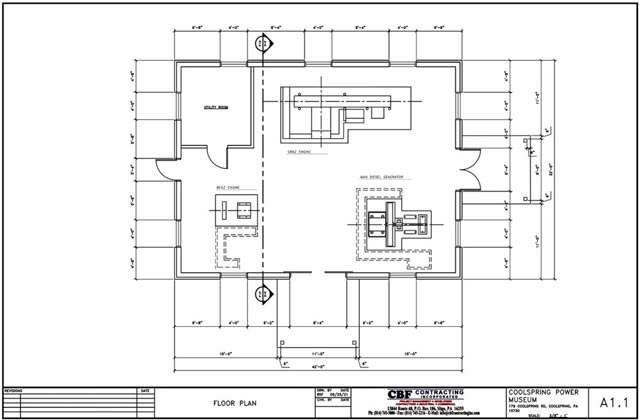
The piping for the floor heat has been placed and
tested. The heater will be installed in the utility room and will keep
the building cozy all year round.
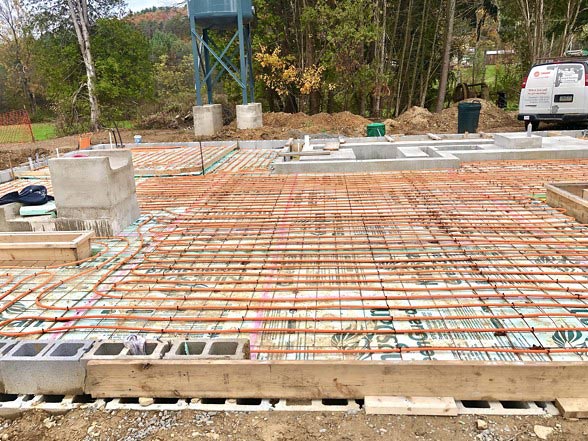
The floor was poured, and the block walls were filled with concrete. Total of 19 yards! Great job!

Finally, all the back filling was done, and heavy rubber covers were placed. Ahh! It’s now ready for a long winter’s nap. 2021 has seen so much progress and we are ready to have a building in 2022!
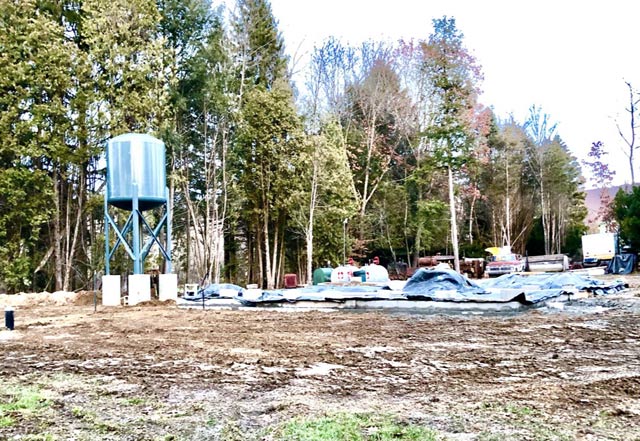
Diesel Centrale CPM has been an exciting, although
challenging, project. We have graciously appreciated all your
donations and support. Gordon Jones and I have spent many long
hours on it but enjoyed it all. A classic power house with three
Diesels is a dream coming true. It will truly be a World Class
exhibit. We will dream on! As Winter is happening, I reflect back
to the sunny days of Summer. They will come again. But for
now, we all wish you and yours a very Merry Christmas and prosperous New
Year.